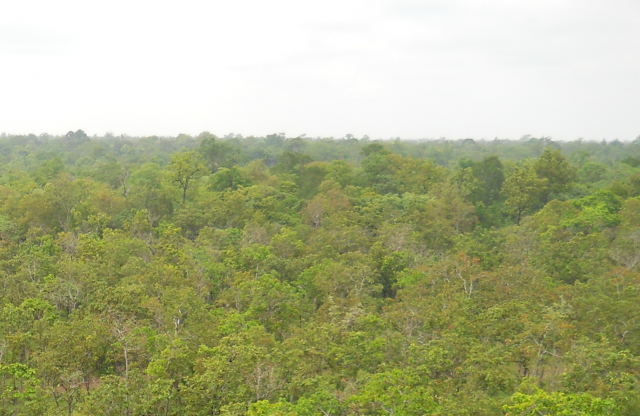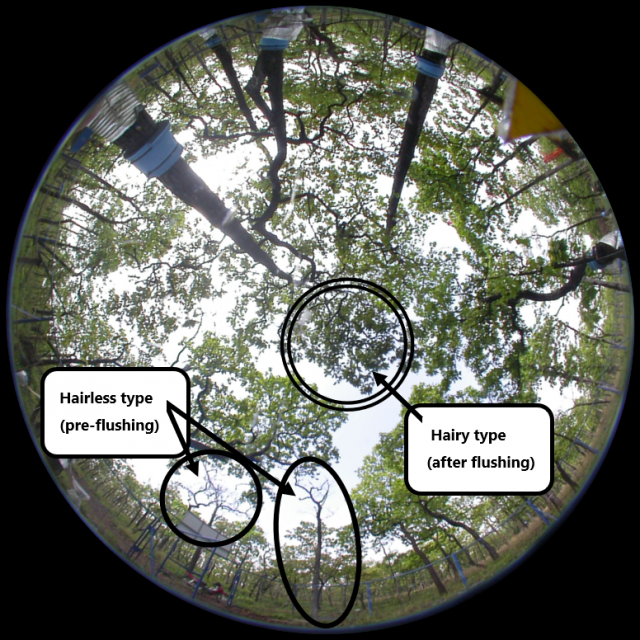Home > International Partnerships > Collaborative Research > Adaptive Strategies of Seasonal Tropical Tree Species Exhibiting Exceptional Delayed Leaf unfolding Phenology and their Establishment Conditions.
Update:June 6, 2024
Main content starts here.
Adaptive Strategies of Seasonal Tropical Tree Species Exhibiting Exceptional Delayed Leaf unfolding Phenology and their Establishment Conditions.
1. Partners
Institute of Forest and Wildlife Research and Development, Forestry
Administration, Cambodia
2. Research Period
FY 2023-2025 Grant-in-Aid for Scientific Research (KAKENHI)
3. Lead Researcher
ITO, Eriko (Kansai Research Center)
4. Background
In seasonal tropical deciduous forests, where the year is divided into wet and dry seasons, trees shed their leaves during the dry season and the new leaves emerge just before the rainy season (leaf unfolding), and the forests enter the fresh green season. In such deciduous forests, only the morphological variant (hairless type) of Terminalia alata, a tall tree species belonging to the family Combretaceae, produce its leaves several months after the onset of the rainy season. It is not known adaptive significance of this specific delayed leaf flushing.
5. Research Goal
The objective of this project is to determine the survival strategy of the delayed leaf flushing of the hairless type growing in Cambodian deciduous dipterocarp forests, together with the conditions for their establishment.
6. Research Strategy
We will examine the life histories of the hairless (no hairs on the underside of leaves, delayed leaf flushing, distributed in dry sites) and hairy (dense hairs on the underside of leaves, normal leaf flushing, distributed in wet sites) forms of Terminalia alata in a seasonal tropical deciduous forest in Cambodia, by microtopography, to determine the conditions under which forms can survive. We will also conduct genetic analysis of the two types to determine how genetically distant the two types are.
7. Publications
Eriko ITO, Satoshi KIKUCHI, Naoyuki FURUYA, Bora TITH (2024) Complex adaptive traits of glabrous Terminalia alata in Deciduous Dipterocarp Forest. The 71th Annual Meeting of the Ecological Society of Japan (ESJ71), 71:PR0656

This is a view of a forest at the beginning of the rainy season with new leaves. Various shades of green, from reddish green to bright yellowish green, adorn the canopy.

This is a hemispherical photograph of the forest canopy taken with a fisheye lens. In the fresh green season, all the tree species, including the hairy Terminalia alata, are leafing out, but only the hairless type is still deciduous.
Copyright © Forest Research and Management Organization. All rights reserved.
